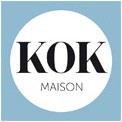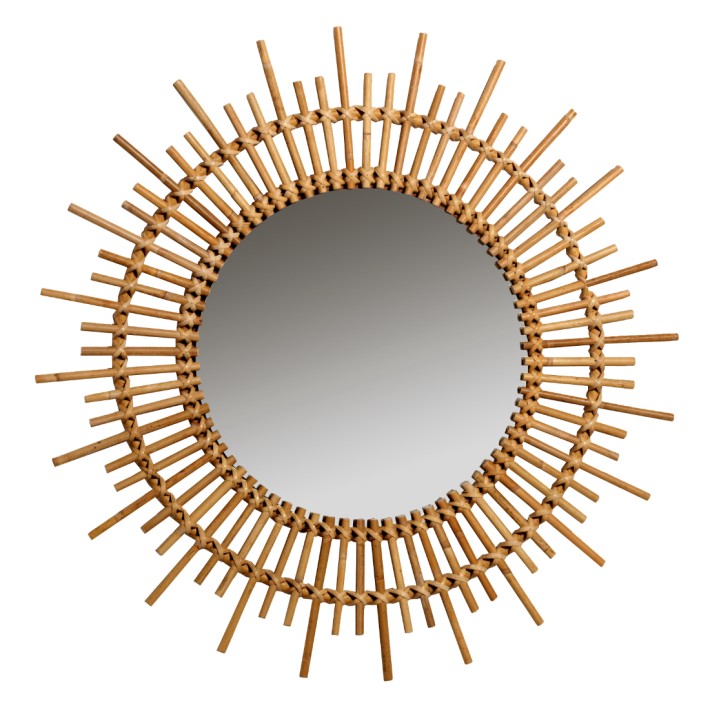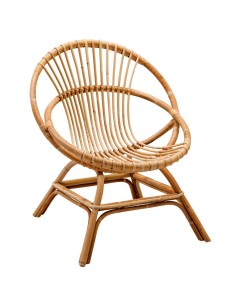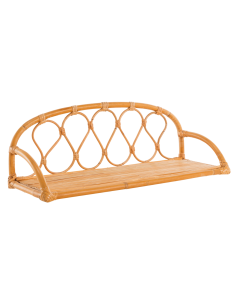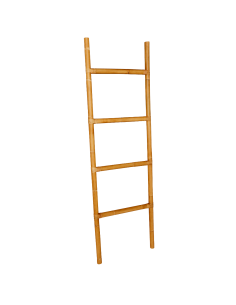- -40%
A KOK design from 1967, the authentic rattan mirror with sun rays we call the ""Planète"" is back! This ""maxi sun mirror"", as majestic as it is radiant, was introduced to take over from its little brothers where a lot of presence and reflection was needed: above a sideboard, a chest of drawers or a dressing table, in a dressing room, etc... With a diameter of 80 cm including rays, only 10 cm more than the simple ""Soleil"", it offers twice the mirror surface (mirror diameter only: 44 cm). Weight 3 kg. Frame in natural rattan, mirror mounted on a plywood backing, made in Indonesia.
made by hand
Free shipping to metropolitan France
You can contact us directly
Family business for 4 generations
The history of the Planète rattan mirror
The end of the 40s and the whole of the 50s were marked by the proliferation of seating and decorative accessories made from metal tubing. Easy to mass-produce industrially on a large scale, cheap, they were well adapted to the constraints of post-war reconstruction: equipping schools, offices and the brand new low-cost housing projects quickly and well. This so-called ""modernist"" style was so successful that at the turn of the 60s, with a feeling of saturation and the return of natural products, rattan craftsmen realised that they had a trump card to play by transposing the most fashionable shapes of the era into their favourite material. The “sunburst” theme was already very common in lighting and mirrors made with metal wire. Pieter KOK was the first to develop a ""rattan"" version, the Soleil mirror, followed by its XL version, the Planète mirror. Success was immediate and this entire collection, which was not yet called ""Vintage"", was distributed everywhere, from small local basket makers to Parisian department stores. The Planète mirror, together with the famous basket bed, the iconic Coquille armchair, and its big brother, the high-backed Marlène, signalled a new era!
The Planète rattan mirror in practice
Like the original models, the Planète rattan mirror is not equipped with a hanging or chain system. It can easily be hung from a small hook or bracket that you have found elsewhere on the market, and previously fixed to the wall or behind a door, by any point on the second rattan hoop. Supplied in an individual cardboard box.
- Height (cm)
- 3
- Width (cm)
- 80
- Depth (cm)
- 80
- Weight (kg)
- 2
- Assembly
- delivered assembled
- Main color
- Beige
- Main Material
- Rattan
- Country of origin
- Indonesia
- Collection
- PLANETE
- designer
- KOK maison
- material
- Structure en rotin naturel, miroir monté sur fond contreplaqué.
- care
- Dépoussiérer avec un chiffon légèrement humide ou la brosse de l'aspirateur régulièrement.
- diameter
- 80
- parcel height (cm)
- 89
- parcel width (cm)
- 6
- parcel length (cm)
- 89
- parcel weight (kg)
- 4
- use
- Indoor
9 Items
3760311134227
Reviews about this product
-
Très beau et grand miroir
-
une des tiges etait déplacée et fissurée
 Merchant's answer
Merchant's answer
Bonjour, Pourriez-vous envoyer une photo du dommage par email à boutique@kokmaison.com svp ? Merci d'avance KOK MAISON
-
Belle finition et de belle taille
-
Très bonne qualité
-
Satisfaite de mon achat. Beau rendu.
You might also like
